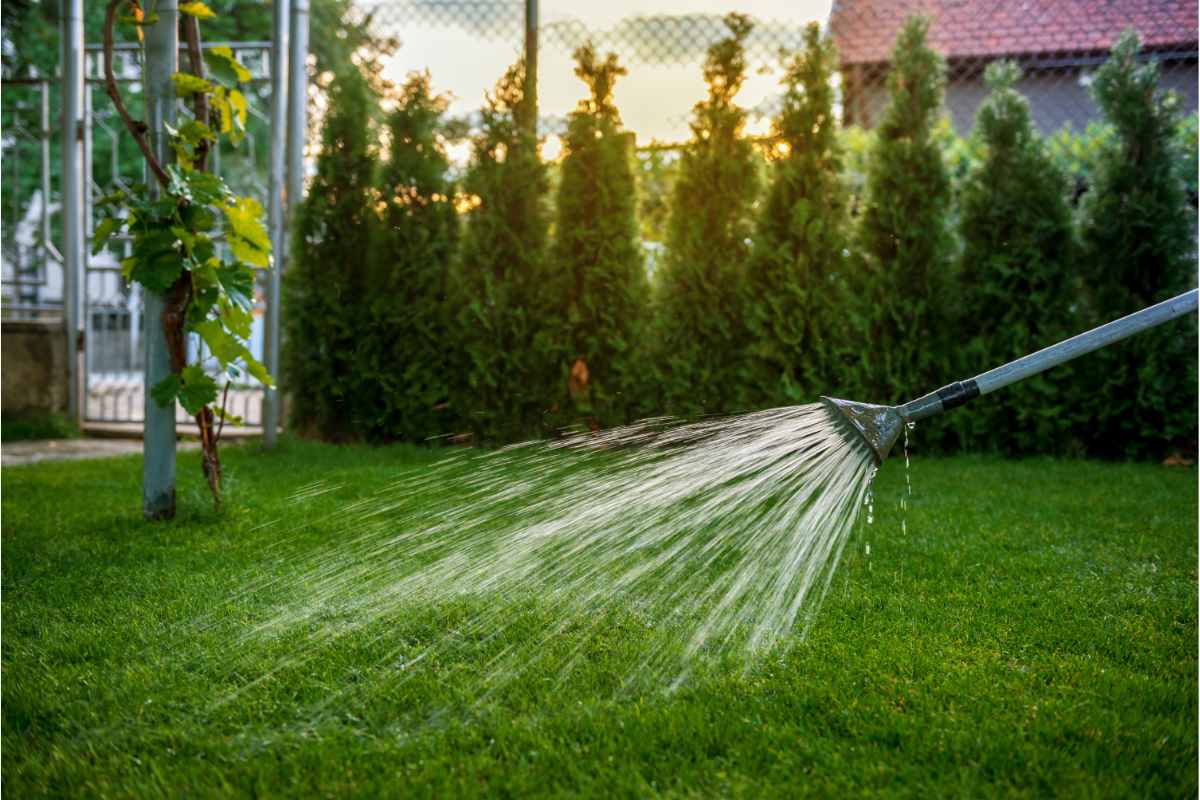
A green lawn is the envy of the neighborhood, and at its heart lies one critical element: watering. But how often should I water my lawn? Getting this right is essential, but it’s not a one-size-fits-all task. Ideally, you’d aim to water your lawn two to three times a week, but the frequency depends on many factors.
In this article, we’ll explore the art and science of lawn watering. From soil and grass type to weather conditions, we’ll break down the variables determining how often you should water your lawn.
So, if you’ve ever wondered about the ideal watering schedule for your lawn, join us as we uncover the secrets to a healthy landscape.
How Often Should I Water My Lawn?
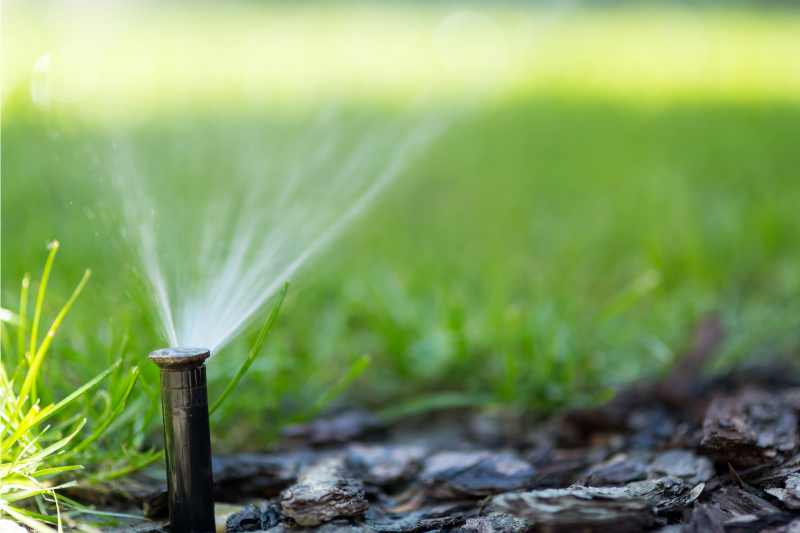
Determining the ideal watering frequency for your lawn can be compared to solving a puzzle with multiple pieces. However, as a general rule of thumb, most lawns thrive when they receive approximately 1 inch of water per week. This 1-inch recommendation can be divided into different watering schedules, depending on your preferences.
One popular approach is to water your lawn with half an inch of water twice a week. This allows the soil to retain some moisture between watering sessions while preventing it from becoming overly saturated. Alternatively, you can opt for a schedule that distributes approximately 1/3 inch of water three times a week.
Here are other factors that can impact your watering frequency:
Soil Type
Your lawn’s soil type plays a significant role in deciding how often you should water it. Different soil compositions have distinct drainage properties, which directly impact your lawn’s water requirements.
- Sandy soil: Sandy soil is known for its rapid drainage. It doesn’t hold onto water very well, so if your lawn is rooted in sandy soil, you’ll likely need to water more frequently, around 3 times a week, or amend the sandy soil over time. You might need to exceed the standard 1-inch per week guideline to ensure your grass receives enough moisture.
- Clay soil: Clay soil, on the contrary, retains water exceptionally well. While this might seem like an advantage, overwatering clay soil can lead to waterlogging, which can harm the grassroots. To avoid this, it’s better to water less often but deeply, once a week. You can also try the “cycle and soak method.”
- Loamy soil: Loamy soil is a gardener’s dream come true. It strikes the perfect balance, with enough organic matter to retain water effectively without becoming overly saturated. If you’re lucky enough to have loamy soil, you’ll find it easier to water twice a week, close to the 1-inch per week guideline.
Grass Type
The type of grass you have planted in your lawn is another crucial factor that can significantly affect how often you should water it. Different grass varieties have varying water requirements, and understanding these distinctions is vital for maintaining a healthy lawn.
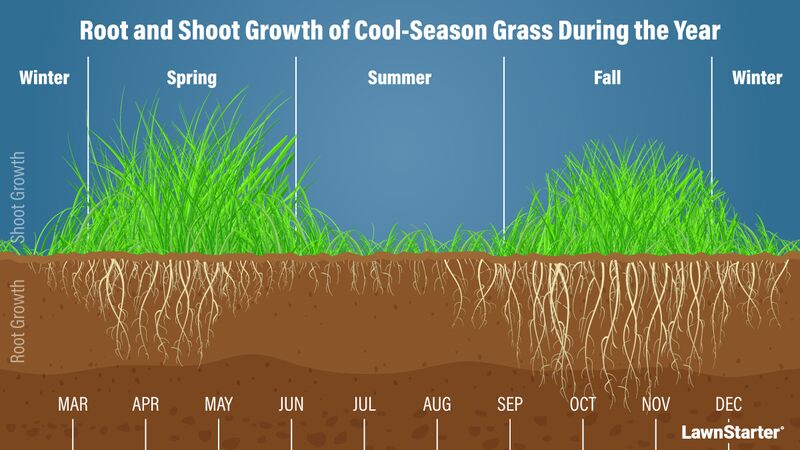
Cool-Season Grasses
Grasses like Kentucky bluegrass, tall fescue, and perennial ryegrass are categorized as cool-season grasses. These grasses thrive in milder temperatures, typically found in spring and fall. They demand more water to flourish during the hot summer months.
If your lawn features cool-season grasses, you’ll likely need to water more frequently, sometimes as much as three times a week, during late spring and summer. As temperatures drop in the fall, you can reduce the frequency of watering to align with the cooler conditions.
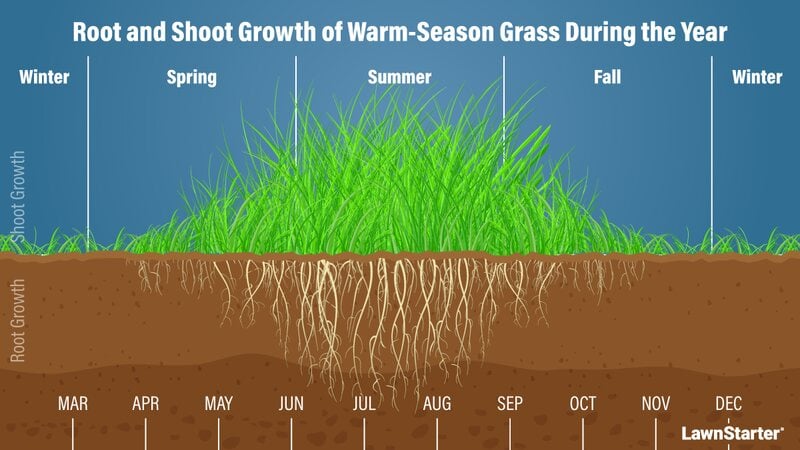
Warm-Season Grasses
In contrast, warm-season grasses such as Bermuda and Buffalograss are naturally more drought-tolerant. These grasses have adapted to thrive in the heat of summer. They require less frequent watering compared to their cool-season counterparts.
Warm-season grasses benefit from deeper, less frequent watering, typically once or twice a week, allowing the water to penetrate the soil deeply and encouraging the development of robust, drought-resistant grass roots.
Shade in the Yard
In yards with abundant shade, moisture tends to linger longer in the soil. The canopy of trees or buildings shields the ground from direct sunlight, reducing evaporation rates. As a result, grass in shaded areas tends to require less frequent watering compared to those exposed to relentless sunlight.
On the flip side, if your yard basks in constant, direct sunlight, you’ll likely find yourself reaching for the irrigation tools more often. Sunlight accelerates the evaporation of moisture from the soil, leaving your grass thirstier. In these sunny spots, you’ll need to adjust your watering schedule to ensure that your lawn doesn’t become parched.
Weather Conditions
While it may seem obvious that weather conditions impact how often you should water your lawn, it’s a point worth emphasizing because it’s a key aspect of responsible lawn care.
If your area has received or is expected to receive approximately 1 inch of rainfall during the week, there’s no need to supplement it with additional watering. Paying attention to the weather forecast is a wise practice; it can save both water and effort while preventing overwatering, which can harm your lawn.
Pro Tip: Installing a rain sensor in your sprinkler system can be a game-changer. These devices are designed to detect moisture in the air, specifically when it’s raining, and automatically adjust your irrigation schedule accordingly.
Newly Planted Seeds or Sod
When it comes to newly laid sod or freshly sown grass seeds, a different set of watering rules applies. These tender green shoots need more frequent and specific attention to establish themselves properly and develop into a healthy, resilient lawn.
- New grass seeds: After sowing new grass seeds, it’s crucial to keep the soil consistently moist to support germination. Watering grass seeds two to three times a day for short durations (about 5 to 10 minutes each time) is the norm. Once the grass seeds begin to sprout (around two weeks after planting), transition to a daily watering routine.
- New sod: Newly installed sod requires special attention during its initial phase. In the summertime, it’s best to provide deep soaking to encourage root establishment. Water your sod twice a day, ensuring the soil is thoroughly moist but not waterlogged. After two to three weeks, once the sod is established, adjust your watering routine to the standard of 1 inch of water per week.
How Long to Water Your Lawn
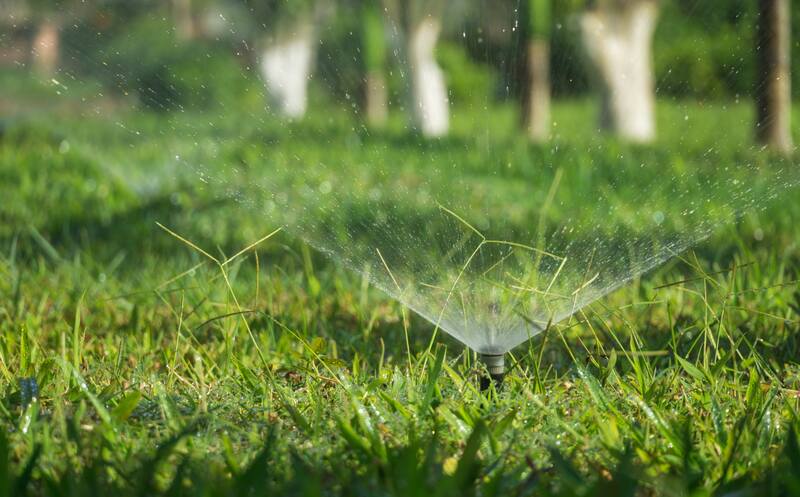
Determining the ideal duration for watering your lawn can sometimes feel like guesswork. However, there’s a practical method called the “catch can test” that takes the guesswork out of the equation and helps you gauge precisely how long you should run your sprinklers. Here’s how you can perform this test:
- Prepare the catch cans: Space at least six containers with straight sides, such as coffee mugs or empty tuna cans, evenly around your lawn. A rain gauge can also be used. These will collect water and provide valuable data.
- Initiate the test: Turn on your sprinklers and let them run for 20 minutes.
- Measure and calculate: After the designated time, use a ruler to measure the level of water in each container. Be sure to record the measurements accurately.
- Average water level: Add up the water levels from all the containers and then divide the total by the number of containers to determine the average water level.
- Estimate sprinkler output: Multiply the average water depth by 3 to calculate how many inches of water your sprinklers deliver in one hour.
Now that you have an estimate of your sprinkler system’s output, you can use this information to tailor your watering schedule to your lawn’s needs.
For example, if your calculations show that your sprinklers provide 0.5 inches of water per hour, you’ll need to run them for approximately 2 hours to deliver 1 inch of watering to your lawn (or 1 hour twice a week). If your sprinklers output 2.0 inches per hour, a 30-minute watering session should suffice to reach the desired 1-inch mark (or 15 minutes twice a week), and so on.
When to Water Your Lawn
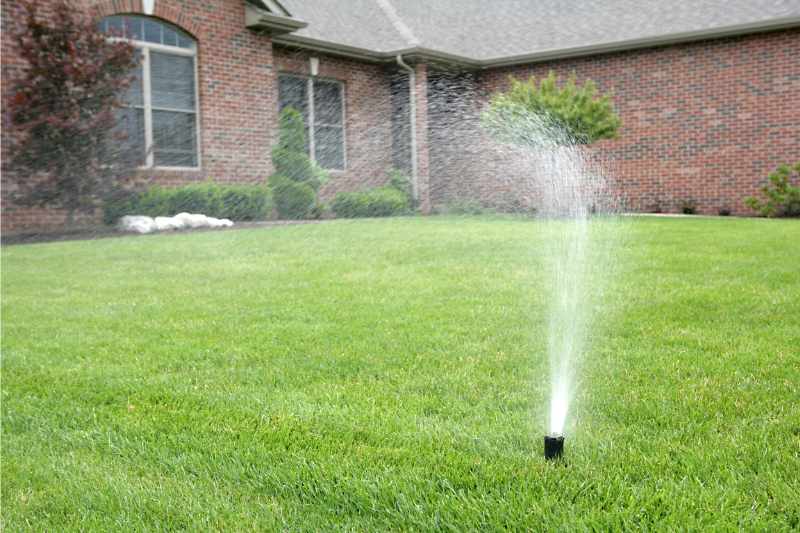
Choosing the right time of day to water your lawn is as crucial as the frequency and duration of watering. The ideal timing ensures that your grass gets the most benefit from each watering session while avoiding potential issues.
Here’s why early morning, specifically between 4 and 8 a.m., is considered the best time to water your lawn:
- The temperatures are cooler, which means less water is lost to evaporation compared to the heat of the day.
- The sun’s intensity in the afternoon can cause rapid evaporation, preventing the water from penetrating deep into the soil where the roots can access it.
- Watering at night can create a favorable environment for fungal diseases to take hold.
It’s also essential to be mindful of windy conditions. On windy days, avoid watering your lawn as the wind can blow away the water droplets, reducing the effectiveness of your watering efforts.
Understanding Your Lawn’s Signs
Here are some common signs that can help you recognize whether your lawn needs more hydration or if it’s getting too much:
Signs Your Lawn Needs More Water
- Yellowing grass: When your grass starts to lose its vibrant green color and turns yellow, it’s often a sign that it’s not getting enough water. This discoloration is a stress response as the grass attempts to conserve moisture.
- Limp grass: If your grass feels limp and doesn’t bounce back when you walk on it, it’s a clear indicator of insufficient moisture. Healthy grass should have resilience and spring back up after being compressed.
- Visible footprints: Another similar telltale sign of under-watering is the appearance of visible footprints or tire tracks on your lawn. When the grass lacks moisture, it can’t recover from the pressure of being walked or driven upon.
Signs Your Lawn Needs Less Water
- Yellowing grass: Surprisingly, yellowing grass can also be a sign of overwatering. When the soil becomes excessively saturated, it can deprive the roots of oxygen, leading to a yellowish appearance.
- Bare spots: Overwatering can create soggy conditions that make it challenging for grass to thrive. As a result, you may notice bare spots or areas of dead grass on your lawn.
- Spongy soil: If the soil feels excessively spongy or mushy underfoot, it’s a sign of overwatering. Healthy soil should have some moisture but should also provide adequate support.
- Mushroom growth: The presence of mushrooms or other fungi on your lawn can be a sign of excessive moisture. Fungi thrive in damp environments, so their appearance may indicate that your lawn is getting more water than it needs.
Watering Tips
- Enhance water retention: Improve water retention by adding a layer of mulch to your lawn. Mulch helps retain moisture in the soil, reducing the need for frequent watering.
- Combat water runoff: If you’re experiencing water runoff, compacted soil might be the culprit. Perform the screwdriver test — if it doesn’t penetrate easily, consider aerating your lawn to improve water infiltration.
- Dethatch for better absorption: Thatch buildup can also hinder water absorption. Dethatch your lawn as needed to allow water to penetrate the soil more effectively.
- Winterize your sprinkler system: Since you won’t be watering during winter, protect your irrigation system by winterizing it. This helps prevent freeze damage.
- Watering sloped lawns: For sloped lawns, use drip irrigation to ensure even water distribution. Drip systems deliver water directly to the root zone, reducing runoff.
- Know your state’s water restrictions: Be aware of your state’s water restrictions and adhere to them. Know when you’re allowed to irrigate your lawn to avoid penalties.
- Deep watering for strong roots: Water deeply and infrequently to encourage deeper root growth. Shallow watering leads to shallow roots, making your lawn more susceptible to drought.
- Invest in a rain sensor: Install a rain sensor in your sprinkler system to prevent unnecessary watering during rainy periods and save water.
FAQ About Lawn Watering
Is it Better to Water Lawns Everyday or Every Other Day?
It’s better to water your lawn every other day rather than daily. Watering every other day promotes the development of a deep root system in your grass. This deep root system makes your lawn more resilient during dry spells, as it can access water from deeper soil layers.
On the other hand, watering every day tends to encourage a shallow root system, making your lawn more susceptible to drought and other stressors.
How Much Water Does a Lawn Use a Day?
The daily water consumption of your lawn depends on its size. A common guideline for lawn watering is to provide about 1 inch of water per week. To break it down further, this translates to approximately 0.62 gallons of water per square foot to achieve that 1-inch depth.
So, if your lawn is 100 square feet, it would require over 62 gallons of water per week to meet the 1-inch recommendation, or around 9 gallons a day. For a 200-square-foot lawn, you’d need around 124 gallons per week, or 18 gallons a day. And so on.
How Many Minutes a Day Should I Water My Lawn?
The duration you should water your lawn each day depends on several factors, including your sprinkler system’s output and the number of days you plan to water your lawn each week.
To help you determine the appropriate watering time, here’s a table that considers various sprinkler outputs and watering frequencies while aiming for the standard of 1 inch of water per week:
| Sprinkler output (inches per hour) | Time to deliver 1 inch of water | Twice a week schedule (minutes per session) | Three times a week schedule (minutes per session) |
| 0.5 | 2 hours | 60 | 40 |
| 1 | 1 hour | 30 | 20 |
| 1.5 | 40 minutes | 20 | 13.3 |
| 2 | 30 minutes | 15 | 10 |
When to Call a Pro
Watering your lawn is undoubtedly a crucial part of lawn care, as it provides the essential hydration your grass needs to thrive. However, it’s just the beginning of the journey to a lush, vibrant lawn. If your lawn isn’t looking its best, remember that there’s more to lawn care than watering alone.
Your lawn may benefit from services like aeration, dethatching, fertilizing, mowing, and more. These additional treatments can address specific issues and promote even healthier growth.
So, if you’re concerned about the state of your lawn or want it to reach its full potential, it’s time to call a local lawn care professional.
Main Image Credit: ba11istic / Canva Pro / License